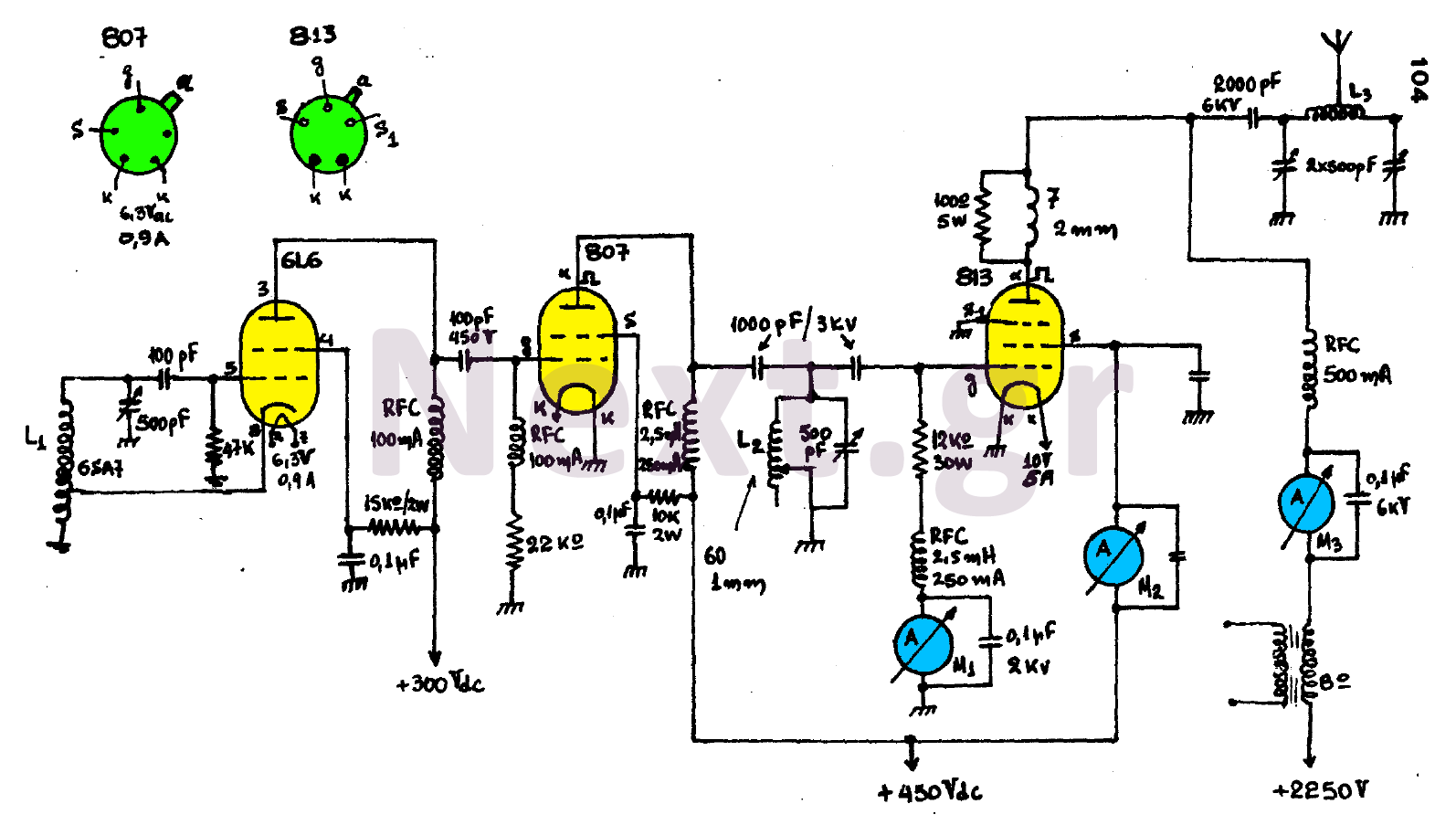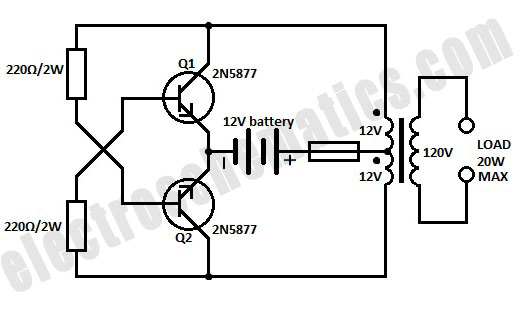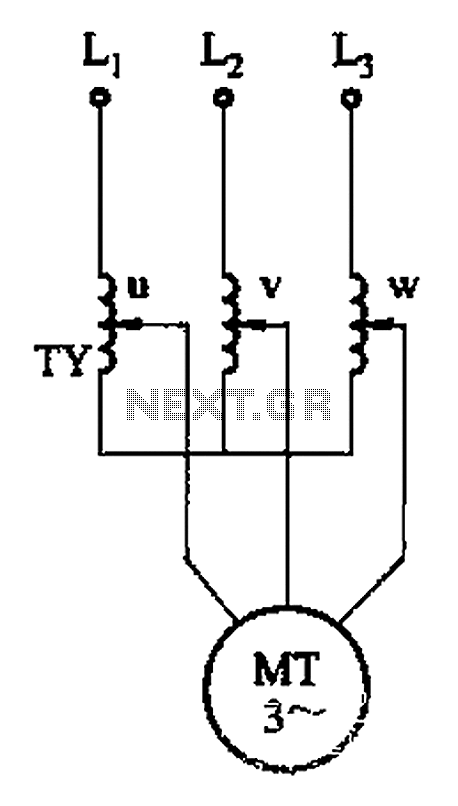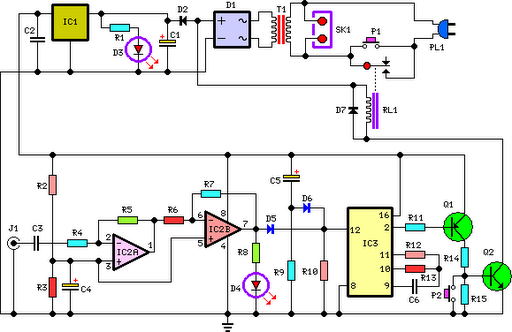
Two Line Intercom circuit

This project is used as an electronic private exchange. It has two telephones, which have the intercom facility, and they can be connected to the telephone line. All the functions are controlled by the 8-bit microcontroller AT89C2051 which has a Program Memory (ROM) of 2 kilobytes. The DTMF (Dual tone multiple frequency) signals are decoded by the DTMF decoder IC 8870 and its output will be in decimal of the pressed key. The switching functions are done by 12V relays.
The electronic private exchange circuit described operates as a communication hub between two telephones, allowing for intercom functionality and connection to an external telephone line. The circuit's core is an 8-bit microcontroller, the AT89C2051, which is responsible for processing inputs and controlling outputs. This microcontroller is equipped with 2 kilobytes of program memory (ROM), providing sufficient space for the firmware that manages the intercom system's operations.
The system utilizes DTMF (Dual Tone Multi-Frequency) signaling for dialing and control. The DTMF decoder IC, specifically the 8870, plays a crucial role in interpreting the DTMF tones generated by the telephones. When a key is pressed on either telephone, the corresponding DTMF tone is transmitted, which the decoder IC processes to output a decimal representation of the pressed key. This output is then read by the microcontroller, which executes the appropriate function, such as establishing a connection between the two telephones or ringing an external line.
To manage the switching functions necessary for connecting calls, the circuit employs 12V relays. These relays are activated by the microcontroller based on the decoded DTMF signals. When a connection is required, the microcontroller energizes the appropriate relay, allowing the electrical path to be established between the desired telephones or to the external line. This relay-based switching ensures that the system can handle multiple states and transitions smoothly, facilitating user interaction without noticeable delay.
Overall, this electronic private exchange system is an effective solution for small-scale communication needs, integrating modern microcontroller technology with traditional telephony components to create a functional intercom system.This project is used as an electronic private exchange. It has two telephones, which have the intercom facility, and they can be connected to the telephone line. All the functions are controlled by the 8-bit microcontroller AT89C2051 which has an Program Memory (ROM) of 2 kilobytes.
The DTMF (Dual tone multiple frequency) signals are decoded by the DTMF decoder IC 8870 and its output will be in decimal of the pressed key. The switching functiond are done by 12v relays. 🔗 External reference
The electronic private exchange circuit described operates as a communication hub between two telephones, allowing for intercom functionality and connection to an external telephone line. The circuit's core is an 8-bit microcontroller, the AT89C2051, which is responsible for processing inputs and controlling outputs. This microcontroller is equipped with 2 kilobytes of program memory (ROM), providing sufficient space for the firmware that manages the intercom system's operations.
The system utilizes DTMF (Dual Tone Multi-Frequency) signaling for dialing and control. The DTMF decoder IC, specifically the 8870, plays a crucial role in interpreting the DTMF tones generated by the telephones. When a key is pressed on either telephone, the corresponding DTMF tone is transmitted, which the decoder IC processes to output a decimal representation of the pressed key. This output is then read by the microcontroller, which executes the appropriate function, such as establishing a connection between the two telephones or ringing an external line.
To manage the switching functions necessary for connecting calls, the circuit employs 12V relays. These relays are activated by the microcontroller based on the decoded DTMF signals. When a connection is required, the microcontroller energizes the appropriate relay, allowing the electrical path to be established between the desired telephones or to the external line. This relay-based switching ensures that the system can handle multiple states and transitions smoothly, facilitating user interaction without noticeable delay.
Overall, this electronic private exchange system is an effective solution for small-scale communication needs, integrating modern microcontroller technology with traditional telephony components to create a functional intercom system.This project is used as an electronic private exchange. It has two telephones, which have the intercom facility, and they can be connected to the telephone line. All the functions are controlled by the 8-bit microcontroller AT89C2051 which has an Program Memory (ROM) of 2 kilobytes.
The DTMF (Dual tone multiple frequency) signals are decoded by the DTMF decoder IC 8870 and its output will be in decimal of the pressed key. The switching functiond are done by 12v relays. 🔗 External reference





